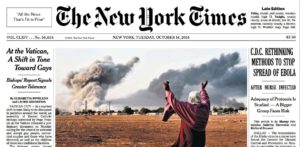Public still turning to mastheads for immigration news – study
 News outlets play the largest role in immigration content shared on Twitter, suggesting that there is still trust in the well-established, traditional masthead, according to a new study.
News outlets play the largest role in immigration content shared on Twitter, suggesting that there is still trust in the well-established, traditional masthead, according to a new study.
The study by the Washington-based Pew Research Centre aimed to better understand the types of information sources that users of Twitter see regarding major US national policy issues, such as the contentious issue of immigration.
Following US President Donald Trump’s signing of a series of executive orders that altered US federal rules around immigration, the subject had a key role in news during this period, and data was collected during the first month of his presidency.
It found that news organisations purporting to do the original reporting made up about 42 per cent of the 1,030 most linked-to sites in immigration related tweets, playing a far larger role in the dialogue on immigration than other types of content providers.
These ‘News organisations’ were described as legacy and digital-native news organisations, and accounted for 28 per cent and 14 per cent of all sites respectively.
‘Other information providers’ such as blogs, advocacy organisations and government sites accounted for just 29 per cent of the immigration related tweets that contained a link, whilst ‘other sites’ that were not clearly current events orientated made up another 29 per cent.
Only 2 per cent of all sites catalogued in the study were found to be ‘fake news’ sites, suggesting there was little clear evidence that fake new sites were a major factor in the information stream on Twitter around immigration.
The role of news organisations became even greater when looking at the frequency with which they were shared; 75 per cent of tweets about immigration during this period linked to news organisations.
The vast majority of sites in the news organisations category were old and more established brands created prior to 2015, suggesting a high level of trust still exists in well-known news organisations and what they report on immigration.
Considering today’s diverse media climate, they may still have a significant voice in the immigration debate.
Two legacy news organisations – the New York Times and The Hill (7per cent each) – were among the most commonly shared, followed by CNN (4 per cent), The Washington Post (4 per cent) and Fox News (3 per cent).
Carissa Gilham
Research Officer, AMES Australia












